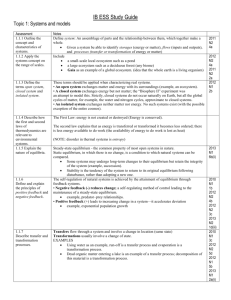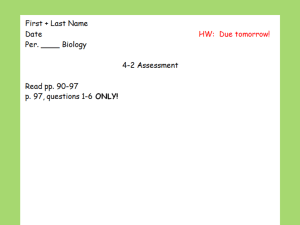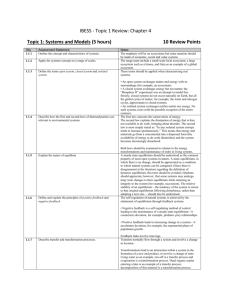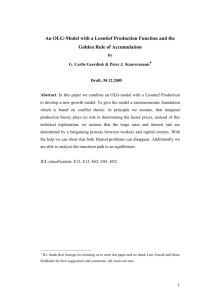Overview - Mr Phillips` IB Geog
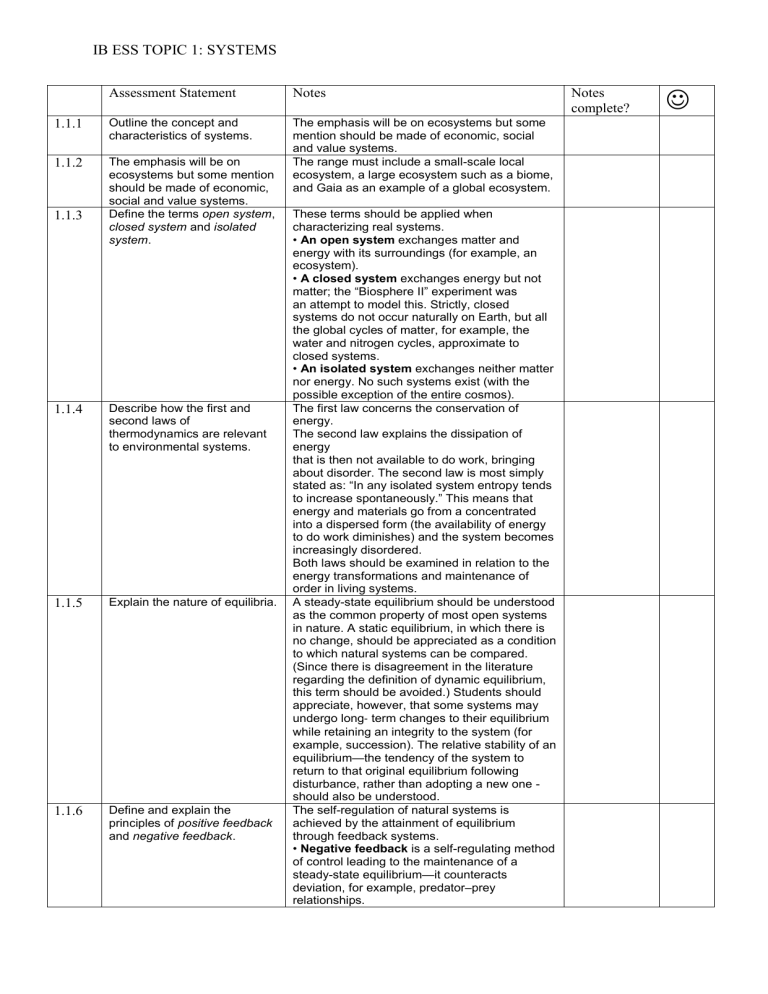
IB ESS TOPIC 1: SYSTEMS
Assessment Statement Notes
1.1.1 Outline the concept and characteristics of systems.
1.1.2 The emphasis will be on ecosystems but some mention should be made of economic,
1.1.6 Define and explain the principles of positive feedback and negative feedback .
The emphasis will be on ecosystems but some mention should be made of economic, social and value systems.
The range must include a small-scale local ecosystem, a large ecosystem such as a biome, and Gaia as an example of a global ecosystem.
1.1.3 social and value systems.
Define the terms closed system and isolated system .
second laws of open system
1.1.4 Describe how the first and thermodynamics are relevant to environmental systems.
, These terms should be applied when characterizing real systems.
• An open system exchanges matter and energy with its surroundings (for example, an ecosystem).
•
A closed system exchanges energy but not matter; the “Biosphere II” experiment was an attempt to model this. Strictly, closed systems do not occur naturally on Earth, but all the global cycles of matter, for example, the water and nitrogen cycles, approximate to closed systems.
• An isolated system exchanges neither matter nor energy. No such systems exist (with the possible exception of the entire cosmos).
The first law concerns the conservation of energy.
The second law explains the dissipation of energy that is then not available to do work, bringing about disorder. The second law is most simply stated as: “In any isolated system entropy tends to increase spontaneously.” This means that energy and materials go from a concentrated into a dispersed form (the availability of energy to do work diminishes) and the system becomes increasingly disordered.
Both laws should be examined in relation to the energy transformations and maintenance of order in living systems.
1.1.5 Explain the nature of equilibria.
A steady-state equilibrium should be understood as the common property of most open systems in nature. A static equilibrium, in which there is no change, should be appreciated as a condition to which natural systems can be compared.
(Since there is disagreement in the literature regarding the definition of dynamic equilibrium, this term should be avoided.) Students should appreciate, however, that some systems may undergo long ‑ term changes to their equilibrium while retaining an integrity to the system (for example, succession). The relative stability of an equilibrium
—the tendency of the system to return to that original equilibrium following disturbance, rather than adopting a new one should also be understood.
The self-regulation of natural systems is achieved by the attainment of equilibrium through feedback systems.
• Negative feedback is a self-regulating method of control leading to the maintenance of a steady-state equilibrium
—it counteracts deviation, for example, predator –prey relationships.
Notes complete?
IB ESS TOPIC 1: SYSTEMS
1.1.7 Describe transfer and transformation processes.
1.1.8 Distinguish between flows
(inputs and outputs) and storages (stock) in relation to systems.
1.1.9 Construct and analyse quantitative models involving flows and storages in a system.
1.1.10 Evaluate the strengths and limitations of models.
•
Positive feedback leads to increasing change in a system —it accelerates deviation, for example, the exponential phase of population growth.
Feedback links involve time lags.
Transfers normally flow through a system and involve a change in location.
Transformations lead to an interaction within a system in the formation of a new end product, or involve a change of state. Using water as an example, run-off is a transfer process and evaporation is a transformation process. Dead organic matter entering a lake is an example of a transfer process; decomposition of this material is a transformation process.
Identify flows through systems and describe their direction and magnitude.
Storages, yields and outputs should be included in the form of clearly constructed diagrammatic and graphical models.
A model is a simplified description designed to show the structure or workings of an object, system or concept. In practice, some models require approximation techniques to be used.
For example, predictive models of climate change may give very different results. In contrast, an aquarium may be a relatively simple ecosystem but demonstrates many ecological concepts.
